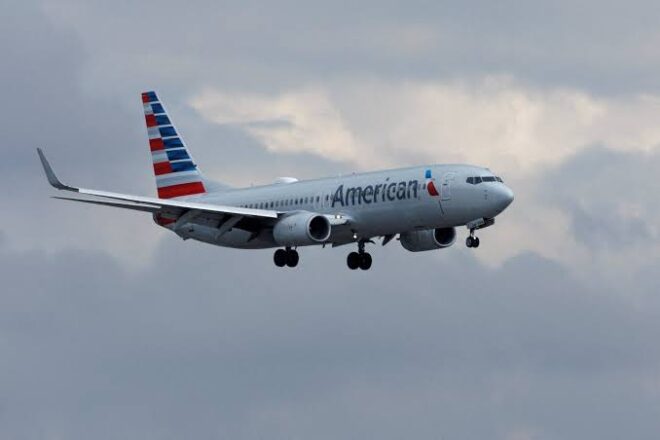
In the dynamic world of aviation, partnerships between airlines and aircraft manufacturers are pivotal. Among these partnerships, the relationship between American Airlines, one of the largest airlines in the world, and Boeing, a leading aerospace company, stands out. Recently, American Airlines CEO Robert Isom emphasized their strong relationship with Boeing while acknowledging the significant challenges Boeing faces. This article delves into the intricacies of this relationship, the challenges at hand, and what the future might hold for both companies.
The Foundation of a Strong Partnership
American Airlines and Boeing have a long-standing partnership that dates back several decades. This relationship has been built on mutual reliance and the shared goal of delivering exceptional service to millions of passengers worldwide. Boeing has been a crucial supplier for American Airlines, providing a significant portion of its fleet, including the 737, 777, and 787 Dreamliner aircraft. These aircraft are integral to American Airlines’ operations, facilitating both domestic and international routes.
The strength of this partnership is underscored by American Airlines’ continued investment in Boeing aircraft. In recent years, American Airlines has placed substantial orders for Boeing’s 737 MAX aircraft, reflecting confidence in Boeing’s ability to deliver cutting-edge technology and fuel-efficient planes that meet evolving industry demands.
Challenges Facing Boeing
Despite the strong relationship, Boeing has faced significant challenges that have affected its operations and, by extension, its partnerships with airlines like American Airlines. One of the most notable challenges has been the issues surrounding the 737 MAX aircraft. Following two fatal crashes in 2018 and 2019, the 737 MAX was grounded worldwide, leading to a halt in deliveries and a massive reputational hit for Boeing. Although the aircraft has since been recertified and returned to service, the repercussions of these incidents continue to resonate within the industry.
In addition to the 737 MAX issues, Boeing has faced production delays and quality control problems with its 787 Dreamliner. These challenges have resulted in delivery delays, impacting American Airlines’ ability to expand its fleet and optimize its route network. Furthermore, Boeing’s development of the new 777X has encountered delays, further complicating long-term planning for airlines reliant on new aircraft models.
CEO Robert Isom’s Perspective
American Airlines CEO Robert Isom has openly acknowledged these challenges while maintaining a positive outlook on the partnership with Boeing. In recent statements, Isom emphasized that despite the hurdles, the relationship between the two companies remains robust. “We have a great relationship with Boeing,” Isom stated, highlighting the collaborative efforts to overcome current challenges.
Isom’s comments reflect a pragmatic approach to the situation. While recognizing the difficulties Boeing faces, he also acknowledges the shared commitment to resolving these issues. The focus remains on working closely together to ensure the timely delivery of aircraft and maintaining the highest safety and quality standards.
The Importance of Collaboration
In the aviation industry, collaboration between airlines and manufacturers is essential for success. The relationship between American Airlines and Boeing is a testament to the power of partnership in navigating challenges and driving innovation. By working together, the two companies can address production issues, improve aircraft reliability, and enhance passenger experience.
One key aspect of this collaboration is the feedback loop between airlines and manufacturers. Airlines provide valuable insights into aircraft performance and passenger preferences, enabling manufacturers like Boeing to refine their designs and improve future models. This continuous exchange of information fosters innovation and ensures that new aircraft meet the evolving needs of the aviation industry.
Future Outlook
Looking ahead, the relationship between American Airlines and Boeing is poised to evolve in response to industry trends and technological advancements. Both companies are committed to sustainability and reducing their environmental impact, aligning their goals with broader industry initiatives to achieve carbon neutrality by 2050.
Boeing’s focus on developing more fuel-efficient aircraft and exploring sustainable aviation fuels (SAF) aligns with American Airlines’ sustainability goals. The airline has already taken steps to incorporate SAF into its operations, and the partnership with Boeing will likely play a pivotal role in advancing these efforts.
Moreover, the ongoing digital transformation in aviation presents opportunities for both companies to enhance operational efficiency and improve the passenger experience. From implementing advanced data analytics to optimizing maintenance processes, technology will be a key driver in shaping the future of air travel.
Conclusion
The relationship between American Airlines and Boeing exemplifies the complexities and opportunities inherent in airline-manufacturer partnerships. Despite facing significant challenges, both companies remain committed to working together to overcome obstacles and deliver exceptional service to passengers worldwide. As the aviation industry continues to evolve, collaboration between airlines and manufacturers will be essential in driving innovation, improving sustainability, and ensuring the safety and reliability of air travel.
In this ever-changing landscape, the partnership between American Airlines and Boeing serves as a beacon of resilience and cooperation, demonstrating the power of collaboration in achieving common goals and navigating the skies together.